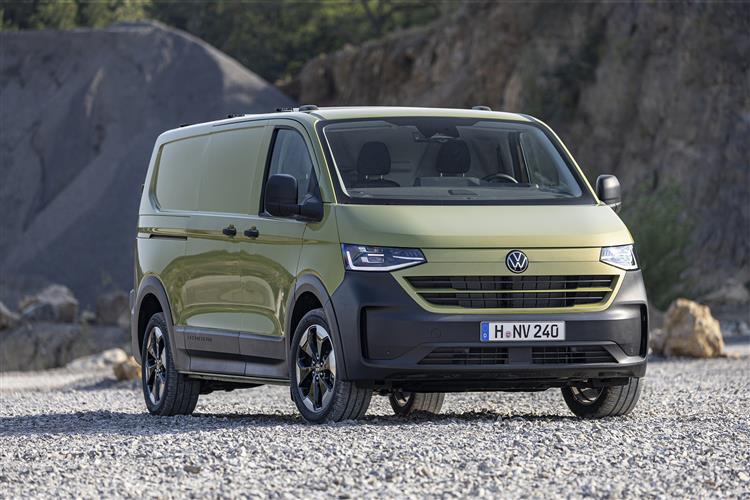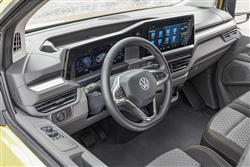GREENER TRANSPORT (some text hidden) --NONE--
By Jonathan Crouch
Volkswagen at last brings us a full EV version of one of its core commercial models. Jonathan Crouch takes a look at the e-Transporter.
Ten Second Reviewword count: 58
Volkswagen finally brings us a core van model as an EV - with more than a little help from Ford. The e-Transporter is a thoroughly well engineered mid-sized electric model. But is it different enough from its E-Transit Custom clone? And is it worth its premium over other EV rivals in this segment? Let's take a closer look.
Backgroundword count: 118
These days, we often think of Volkswagen as a cutting-edge electric vehicle maker. But not when it comes to vans. Yes, we've had the minority interest ID.Buzz Cargo model since 2023. But it seems astonishing that we were a quarter of the way through this century before Wolfsburg finally bought us a full-electric version of one of its three core van models. In some ways, you can argue that it still hasn't. The e-Transporter we look at here was actually engineered by Ford and is built at Ford's plant in Kocaeli, Turkey alongside its clone, the E-Transit Custom. A model we've previously told you is class-leading. So where does that leave this Volkswagen? Let's take a closer look.
Engines and Tech Specword count: 346
Volkswagen also offers this seventh generation transporter as a PHEV. If a full-EV it has to be though, only the e-Transporter will satisfy you. There are three versions of this full-electric model, offering either 136PS, 218PS or even 286PS. All use a single electric motor to drive the rear wheels (though a dual motor AWD model will follow at a later date); and all are powered by a 64kWh battery that should give you around 200 miles of range from a full charge. As you'd expect, the EV version is very quiet at a cruise. What was more surprising for us is that the diesel variant was too, something you'll notice immediately if you're trading up from the previous generation model, especially if the model you're driving has the optional sound-insulating glass. Several driving modes are offered; most of the time, you'll be in the 'Normal' setting. There's also a 'Tow' setting for when pulling a trailer; and an 'Eco' mode to conserve energy. The most urgent 'Sport' setting obviously helps performance but of course harms battery range. Volkswagen reckons this could rise to as much as 270 miles in urban travel, where it's possible for a B transmission mode to be selected to increase regenerative braking. Given that it was mainly developed by Ford, you'd hope that this seventh generation Transporter might feel a little more involving to drive than its predecessors - and it does. There's less body roll and more traction through the corners, though the improvements are dulled a little by quite a light steering rack - though obviously you'll appreciate that around town. It's ride quality though that might really sell you this van; we've not driven a mid-sized model that handles poor urban surfaces better. Get out of this VW and then try one of the competing Stellantis EV models and you'll notice an improvement. One drawback of the electrified Transporter models lies with a lower braked towing weight - which has been increased on the diesel version up to 2.8 tonnes but is limited to 2.3-tonnes with this EV.
To see the full road test text contact us on 0330 0020 227
Pictures (high res disabled)

.jpg)
|
.jpg)
|
.jpg)
| |||
.jpg)
|
.jpg)
|
.jpg)
| |||
.jpg)
|

|
Statistics (subset of data only)
Min |
Max |
|
Price: |
£46,784.00 (At 25 Jul 2025, inc. VAT) |
£54,872.00 (At 25 Jul 2025, inc. VAT) |
Max Speed (mph): |
93 (218PS) |
|
0-62 mph (s): |
8.6 (218PS) |
|
Length (mm): |
5050 |
|
Height (mm): |
1968 |
|
Load Volume (l): |
6 |
7 |
Payload Capacity (l): |
785 |
817 |



